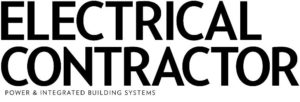Blog
- Home
- Resources
- Bright Ideas Blog
- A Walk in the Park: LEDs in Parking Garages
A Walk in the Park: LEDs in Parking Garages

Contractors Capitalize On Great Opportunities To Upgrade Parking Garages With LEDs
by Susan Bloom
With tens of thousands of parking garage structures containing hundreds of millions of spaces to accommodate the nation’s 135 million-plus registered passenger cars, the U.S. parking garage sector is a robust market that accounts for significant real estate in cities and towns nationwide. At the same time, light-emitting diode (LED) lighting is proving to be ideally suited to support the unique conditions of these facilities, rendering parking garages outstanding opportunities for LED upgrades. Following, several industry experts explain why it behooves contractors to pursue this upsell and stake out their space in this booming market.
Out with the old
For decades, U.S. parking garages have relied on conventional workhorse lighting technology. Ross Barna, CEO of Northvale, N.J.-based RAB Lighting, said that garages have been predominantly lit with linear fluorescent or high intensity discharge lighting technologies in various shapes and wattages from 70–250 watts (W).
Abby Mosher, product manager for commercial outdoor lighting at GE Lighting, agreed.
“Parking garages have typically used 150–175W metal halide, 100–150W high pressure sodium, or linear fluorescent lighting,” she said.
The Department of Energy’s (DOE) 2014 study, “Energy Savings Forecast of Solid-State Lighting in General Illumination Applications,” further verifies that these high-lumen, long-life technologies have traditionally dominated parking garage applications, accounting for more than 95 percent of installations through 2013.
However, Eric Snyder, marketing manager at Eaton’s Cooper Lighting business in Peachtree City, Ga., said that LED luminaires provide significant advantages over traditional luminaires for parking garage applications.
“Parking garages often operate 24/7, which can lead to significant maintenance expenses with traditional light sources such as probe start metal halide,” he said. “From a financial perspective, LED luminaires often offer a 75 percent reduction in energy consumption and will be virtually maintenance-free for over a decade. From a safety standpoint, LED luminaires are instant on/off and offer superior visual uniformity to enhance the level of safety.
[In addition] LED luminaires are available with integral control options that further reduce operating costs while also enhancing safety.”LEDs also deliver a range of other benefits to parking garage applications. In addition to driving significant savings by reducing fixture wattages down to the 26–80W range, depending on ceiling height and fixture spacing, “the controllability of LED lighting using dimming and occupancy sensing allows even greater savings during periods of reduced occupancy,” Barna said.
Because of the long life LEDs offer, often 50,000–100,000 hours—at least several times greater than HID and fluorescent counterparts—as well as their robust operability and efficiency gains in cold temperatures, “maintenance savings are a major plus because customers aren’t having to relamp over and over again during the life of the fixture,” said Kim Jackson, GE Lighting’s brand manager for outdoor lighting.
She noted that parking garage lighting outages present concerns for customers and require immediate replacement, often at great expense to contractors.
“Parking garages can include a large number of luminaires, and, due to their relatively low mounting heights, the LED luminaires can often be replaced with minimal lift and equipment expenses,” Snyder said. “Due to their density, garage lighting can typically be replaced with ease, on time and on budget.”
“Beyond savings, LED lighting can also help improve the performance of illumination with good uniformity, good coverage and improved color rendering, which assists both drivers and pedestrians,” said Greg Dixon, product portfolio manager for Durham, N.C.-based Cree. “An often overlooked fact is that improved illumination and color rendering enables clearer images for safety systems, such as video cameras.”
As a result of this powerful package of benefits, the DOE expects the penetration of LEDs in this segment to rise precipitously, from 4 percent of all parking garage lighting in 2013 to an estimated 13 percent in 2015, 67 percent by 2020, and 99 percent by 2030.
“Today, the benefits of LED luminaires are so compelling that choosing LED has become a very easy decision,” Snyder said. “For typical garage applications, 50W or less of LED will meet or exceed IES recommended light levels. With the energy efficiency of LED luminaires and the near parity of Day 1 costs of LED versus HID technology, it just doesn’t make economic sense to use HID sources for this application.”
For this reason, Eaton’s Cooper Lighting business began exiting the HID market for parking garage luminaires last year.
Field notes
Our experts suggest the following tips to help contractors maximize their share of the growing market for LED upgrades in the nation’s parking garages.
Validate and test
RAB Lighting provides free lighting design services, economic analysis and fixture samples to help assure channel partners and end-users of a proper installation and outcome.
“Since it’s often a sizable investment to upgrade an entire parking garage’s lighting, it’s important that the lighting design is validated, the economic case is made to the owner, and a test installation is done,” Barna said.
Snyder agreed with the importance of these steps.
“Before selecting an LED luminaire, be sure to verify that the specific configuration will offer the desired level of illumination and meet the end-users’ requirements,” Snyder said. “Perform lighting layouts, ask to see application examples of the LED luminaires installed, and perform a mock-up installation before completing the entire garage if necessary. With LEDs, seeing is believing, and a mock-up will go a long way towards illustrating the visual and safety enhancements driven by a proper LED installation.”
Investigate rebates
With an increasing number of utility companies nationwide providing rebates on LEDs, which help to shorten project payback periods and increase ROIs, “it’s a good idea to ask your utility if they offer incentives for parking garage lighting upgrades,” Barna said. “Many do and often require DesignLights Consortium [DLC]-approved fixtures to be used; to find out which fixtures are approved, simply visit the DLC website at www.designlights.org.”
Ensure reliability
As LEDs involve inherently different technology than their more conventional counterparts, quality products from trusted sources go a long way toward ensuring the LED system’s long-term performance, compatibility and success.
In that regard, “don’t select the lighting fixtures solely on price,” Dixon said. “A competitive price is always important to provide a fast payback to the owner, but there are other important factors related to the quality of the illumination, such as glare levels, uniformity, color rendering, etc., all of which are equally important when deciding on the luminaire. A solid warranty and the manufacturer’s years of experience manufacturing LED luminaires should also be considered,” he said.
“Not every LED solution is the same,” Mosher said, “So, contractors need to be sure to work with a supplier who’s both reliable and provides a quality product. And because garage applications can create challenges due to their low mounting heights, contractors should definitely be cautious of LED solutions that cause excessive glare.”
Pursue proper protection
Good power quality is essential when dealing with electronic technologies like LEDs, and, as with any electrical project, contractors need to ensure that everything is installed safely, both for the welfare of their workers as well as the site’s ultimate end-users. Since parking lots and structures are outdoor environments, contractors are encouraged to plan for lightning protection with management, review the grounding and connections at all panels, and potentially install surge protection at the panels if not already present.
Keep your eyes open
Experts confirm that LEDs have advanced significantly over the past few years, and more positive developments should come.
“As LED technology continues to improve, contractors should expect to see lower and lower wattages creating the same amount of light and for costs to come down as well,” Barna said.
On the technical front, occupancy sensing is an attractive feature that will continue to take the parking garage market by storm, as the ability to dim further boosts energy savings for customers looking to minimize operating expenses.
“Unoccupied levels can be dimmed by 50 percent and immediately return to full brightness when motion is detected,” Dixon said. “On the perimeter of a garage, luminaires can automatically dim in response to daylight that’s already providing adequate visibility.”
“Today, LED luminaires are offered in a wide variety of control solutions, including integral sensors, DALI, wireless mesh networks and more,” Snyder said.
He recommended that contractors familiarize themselves with these technologies and occupancy sensing.
“To offer the best solution to the end-user, it’s important to have a full comprehension of the benefits that controls can offer,” he said.
Embrace the opportunity
“Talk to your customers about upgrading their garages to LED lighting,” Dixon said. “The parking garage segment is often overlooked and provides an opportunity for electrical contractors to generate business with a compelling story to the owner and/or facility manager regarding the benefits of LED lighting, which not only save owners money by reducing energy consumption but also eliminate costly relamping and maintenance of traditional light fixtures that use HID and fluorescent lamps. An upgrade can pay for itself in less than two years through lower energy costs and reduced maintenance, “and a well-lit parking garage can also attract customers and enhance both vehicle and pedestrian safety.”
Contact Us
At Bay Lighting, we understand that exceptional lighting plays a pivotal role in enhancing the atmosphere and functionality of your commercial spaces. Our team of experts is dedicated to providing top-notch commercial lighting services and cutting-edge LED solutions tailored to your unique needs. Whether you’re looking to revamp your office, retail store, or industrial facility, we’ve got you covered. We pride ourselves on delivering cost-effective, energy-efficient, and environmentally friendly lighting solutions that not only improve aesthetics but also save you money in the long run. If you have any questions or require assistance with your commercial lighting project, don’t hesitate to get in touch with us. Contact Bay Lighting today and let us brighten your business’s future.




